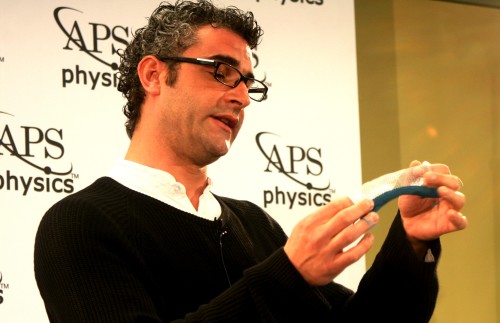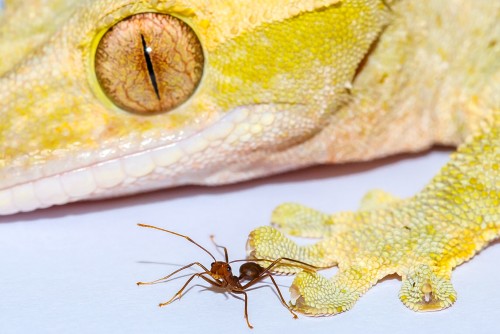Tag archives: bio-inspiration
Primal colours across the spectrum, impossible space engines
By Tushna Commissariat
Physicists and artists have long been intrigued and drawn in by the various mysteries that light and its many colours offer. In the latest installation to be unveiled at the Natural History Museum in London, artist Liz West has unveiled her stunning new work dubbed Our Spectral Vision. The exhibit aims to delve into the long and complex history of the development of colour and vision “through the eyes of nature”. Our regular readers will recall the many physics papers that look into the same, from the structural colour of butterflies to the nanostructures in avian eggshells to the mantis shrimp’s visual superpowers. West’s exhibit deals with many of these topics and more including some fantastic “350 rarely seen specimens, from beautiful birds to fossils of the first organisms with eyes”. If you are based in the UK, do visit the exhibit and otherwise, take a look at the video above to see through West’s eyes.
View all posts by this author | View this author's profile
3D-printed dog’s nose sniffs out why canines are excellent chemical analysers
By Tushna Commissariat
After a long trip in the US – attending the APS March meeting and visiting both the Maryland campus of the National Institute for Standards and Technology, as well as the Brookhaven National Laboratory in New York – I finally made my way back home yesterday. As I flew out of New York, I was reminded of my visit to NIST’s Surface and Trace Chemical Analysis Group, where researchers develop a variety of ways to detect contraband substances at airports and other public locations. While the team looks into a variety of ways to detect trace residues of banned substances such as drugs or explosives that may be found on people or objects – from mass spectroscopy to thermal desorption to vapour-sampling – my favourite was their canine research that led them to create a 3D-printed dog’s nose!
The everyday physics of knitting, ribbon-curling and more

Knit stitch: Frédéric Lechenault talks about the physics of knitted materials. (Courtesy: James Riordon/APS)
By Tushna Commissariat in Baltimore, Maryland, US
You may think that a simple occurrence such as a tree shedding its leaves or an everyday activity such as knitting or ribbon-curling does not involve a great deal of physics, but you would be wrong. In a press session here at the APS March meeting entitled “The physics of everyday life”, three different groups of researches talked about the unexpectedly complex physical principles that govern all of the above mentioned instances.
Sunny Jung of the Bio-Inspired Fluid Lab at Virginia Tech in the US studies the shapes of different leaves and the thickness of their “petioles” or stalks – both of which determine the stresses a leaf can withstand on a windy day and what happens when it ultimately falls. Jung’s team studies this because leaves are actually very good at withstanding all kinds of stress and strain without buckling – something that could be applied to large man-made industrial objects such as suspended road-signs.
The researchers found that slender leaves are more likely to bend under high winds, whereas a flat leaf is more likely to twist at the stem before falling. They also discovered that the length of the stalk is determined by the size of the leaf, with larger leaves needing longer stems so that sunlight can cover more of their surface area.
Scientists officially ground Spider-Man

Stick together: both ants and geckos have adhesive pads that let them scale vertical surfaces. (Courtesy: A Hackmann/D Labonte)
By Tushna Commissariat
Don’t tell the kids just yet, but becoming Spider-Man, even after being bitten by a radioactive spider, is looking less and less likely for us humans – we are just too big. The latest work, done by researchers at the University of Cambridge in the UK, has shown that gecko-sized is pretty much the largest you can be if you realistically want to scale up walls with adhesive pads. Any bigger, and most of your surface area would need to be covered in large sticky pads to pull off the gravity-defying walk. Indeed, the team estimates that roughly 40% of an average human being’s total body surface would need to be sticky – this means a whopping 80% of your front would be covered in adhesive pads.